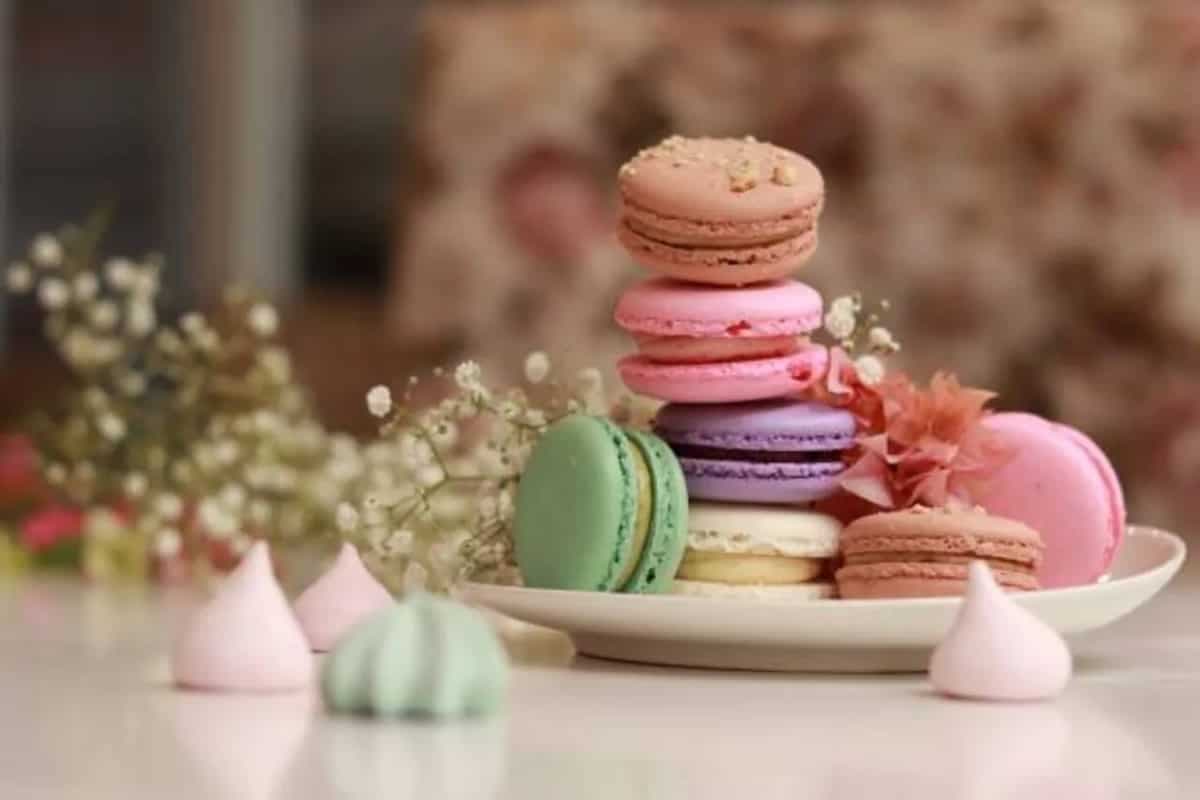The elaborate flavours and exquisite presentation of French desserts are well known. French pastry schools are credited with defining and creating whole dessert categories that are now widely consumed around the globe. The buttery, flaky pastries known as viennoiserie, which include croissants and pains au chocolat, are among the most classic types of French sweets. A diverse range of cakes, tarts, and mousse-based sweets produced with decadent ingredients like butter, sugar, and cream are included in the classic category of gâteaux. These sweets are the height of decadence.
French sweets are incredibly popular outside of France. The delicacy and beauty of these delectable delicacies captivate people from all over the world. From macarons to crème brûlée, French sweets have come to represent elegance and sophistication. French sweets are guaranteed to entice taste buds and create a memorable memory, whether they are consumed at a neighbourhood bakery or in a Parisian patisserie.
Macarons
This is a classic French biscuit cake, prepared of egg white, powdered sugar, and almond flour, with a delicious meringue foundation. However, legend has it that it was brought to France by Catherine de Medici's Italian cooks when she married Henry II. Another folktale claims that two nuns from Nancy allegedly made macarons popular by selling them professionally in 1792, during the French Revolution. The same centuries-old recipe is allegedly used in the baking at Nancy's Maison des Soeurs Macaron. These days, macarons from Saint-Emilion and Ladurée are well-known around the world.
Mille-Feuille
A classic mille-feuille, which translates to "a thousand leaves," is made out of two layers of pastry cream sandwiched between three layers of puff pastry, with powdered sugar sprinkled on top. Although it seems easy enough to do, only a true professional can produce a crisp, fluffy, and airy vanilla slice.
Some mille feuille varieties incorporate whipped cream, fruits, custard, or chocolate glaze, much like the Italian Napoleon filled with almond cream. In 1651, chef François Pierre de la Varenne's cookbook Le Cuisinier François contained the first mille-feuille recipe.

Souffle
Loved by people all over the world, this immensely popular French delicacy is renowned among gourmets for its light, airy texture and notorious among chefs for being extremely unforgiving, leaving little to no margin for mistakes during cooking.
This delicate cake is composed of two parts: an egg white meringue on top of a custard or cream foundation. Soufflés come in savoury and sweet varieties. Sweet soufflés are virtually always served as desserts and usually feature a sauce in the centre. Savoury soufflés are typically served as an appetiser and frequently contain items like cheese, crab, or onions.
Eclairs
Around the start of the 20th century, these elongated pastries with a crispy outside, a soft doughy middle, and a sweet, creamy centre emerged in France. They have an attractive glaze. The majority of culinary historians think that renowned French chef Marie-Antoine Carême developed them.
Éclairs, which means lightning in French, got their name from the way light would reflect off them after being covered with confectioner's glaze. The Boston Cooking School Cook Book, which was released in 1884, has the first recipe for these delicious candies. Eclairs are growing more and more popular in France and across the world these days, and new fillings like green tea and lemon cream are being added.
Creme Brulee
Rich, creamy, and velvety vanilla custard is the key to a delicious crème brûlée. This traditional French dessert is served cold and has sugar on top that has crystallised from a brief burst of heat. It's straightforward yet delicious. The simple crème brûlée, first recorded in 1691 by François Massialot in his recipe book, is credited with drawing inspiration from the Spanish dessert Crema Catalana. Crème brûlée disappeared from recipe books after going out of style until seeing a comeback in the 1980s. It's a traditional French dessert that's definitely worth trying.
Croissant
Originating in France, the croissant is a flaky, buttery pastry that is eaten as a dessert when filled with almond cream or chocolate. It has become a symbol of the global breakfast scene. Its unique light and airy texture is achieved by layering layers of dough with butter.
The golden-brown exterior conceals a velvety inside, giving every bite a delightful experience. Whether consumed plain, stuffed with chocolate, or paired with coffee, the croissant's exquisite flavour and sophisticated simplicity continue to entice palates around the globe.
Crepes
Delicious and versatile, crepes are French in origin and captivate palates all over the world. These delicate, unleavened pancakes are made from a basic batter consisting of flour, eggs, milk, and butter. Stuffed with a variety of sweet or savoury delicacies, crepes can be cooked to golden perfection on a hot skillet.
Crêpes are a beloved treat for breakfast, lunch, or dessert since they effortlessly embody a culinary canvas, whether they are embracing the elegance of a chocolate spread and strawberriеs or the heartiness of ham and cheese.


